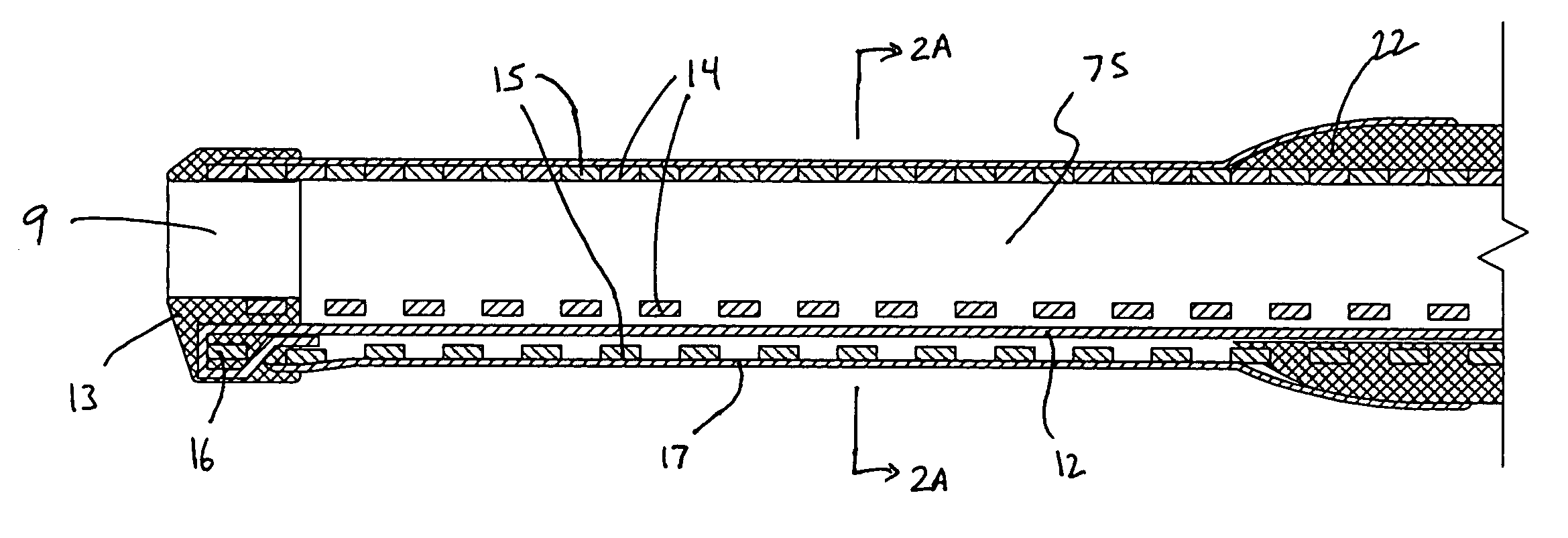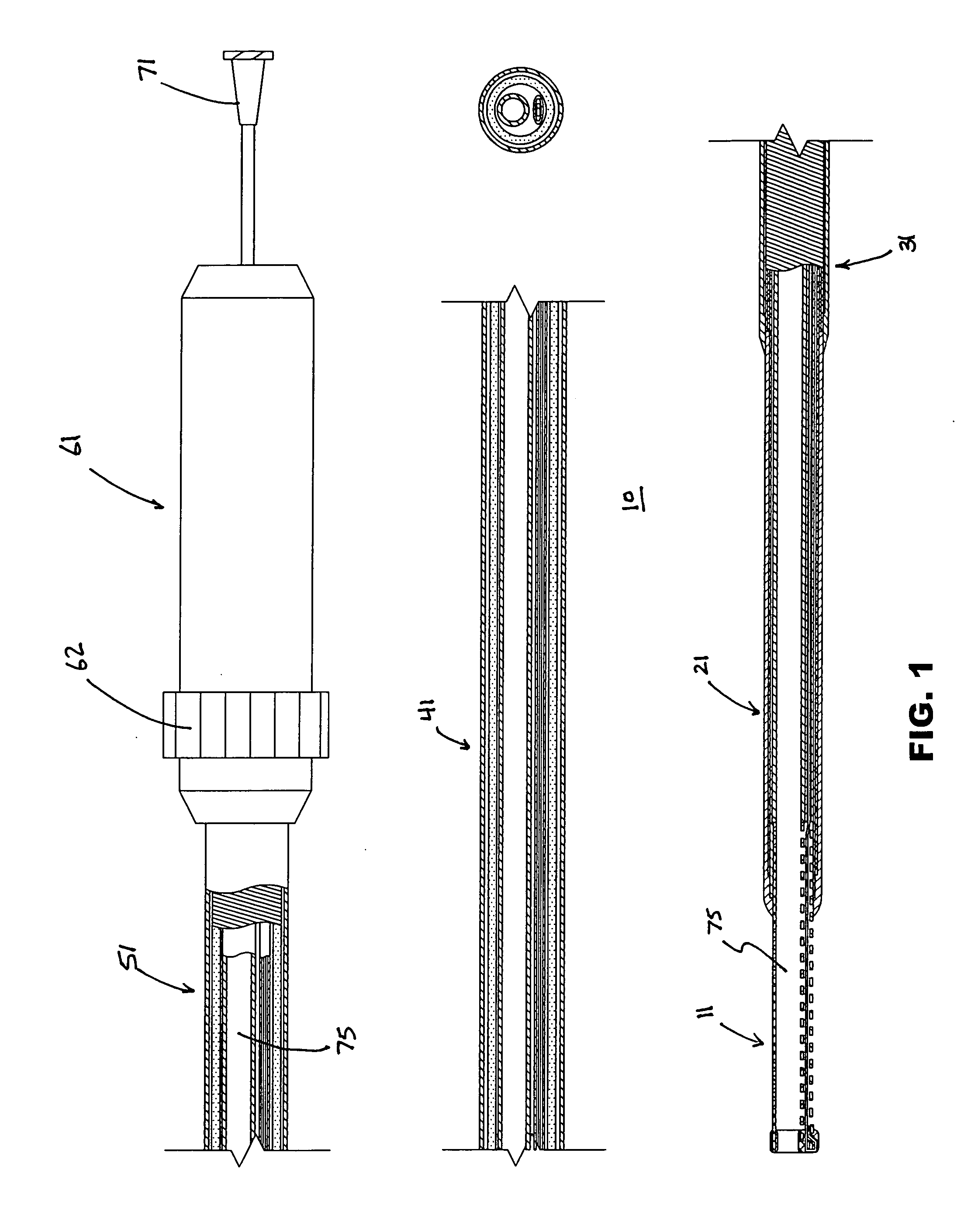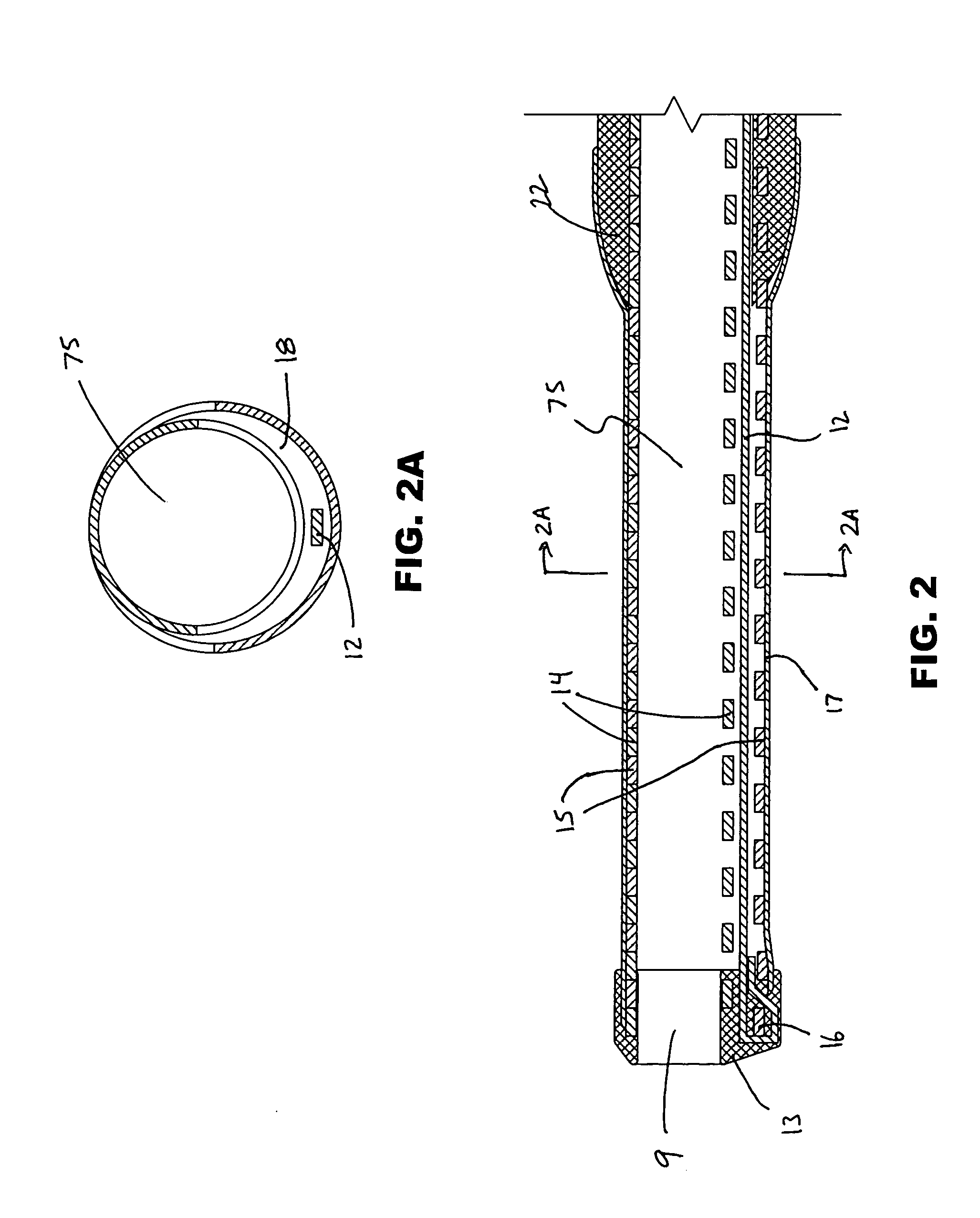Devices and methods for crossing a chronic total occlusion
a total occlusion and device technology, applied in the direction of dilators, catheters, guide wires, etc., can solve the problems of more difficult to cross chronic total occlusions, damage to the heart, and serious medical consequences, so as to increase the pitch, increase the tendency to expand, and maximize the torque transmission properties
- Summary
- Abstract
- Description
- Claims
- Application Information
AI Technical Summary
Benefits of technology
Problems solved by technology
Method used
Image
Examples
Embodiment Construction
[0047] A first embodiment of articulating tip catheter 10 is illustrated in FIG. 1. This embodiment includes a variably deflectable tip region 11, a distal shaft region 21, a transition region 31, a main shaft region 41, a handle 61, and lumen 75 communicating with luer 71. The handle is described in further detail later, but is secured to the main shaft region to provide torquing and tip deflection input to the catheter.
[0048]FIG. 2 illustrates one embodiment of the deflectable tip region. An articulation structure is shown comprising two coils wound to two different diameters nested together, i.e., a smaller diameter inner coil 14, and a larger diameter outer coil 15. Control wire 12 is secured to distal end 13 of the articulation structure, by forming a loop in the control wire which surrounds the distal-most turn 16 of the outer coil. The control wire may be further secured to the coil structure by means of a spot weld. When the control wire is moved proximally relative to the ...
PUM
| Property | Measurement | Unit |
|---|---|---|
| deflection angle | aaaaa | aaaaa |
| deflection angle | aaaaa | aaaaa |
| length | aaaaa | aaaaa |
Abstract
Description
Claims
Application Information
 Login to View More
Login to View More - R&D
- Intellectual Property
- Life Sciences
- Materials
- Tech Scout
- Unparalleled Data Quality
- Higher Quality Content
- 60% Fewer Hallucinations
Browse by: Latest US Patents, China's latest patents, Technical Efficacy Thesaurus, Application Domain, Technology Topic, Popular Technical Reports.
© 2025 PatSnap. All rights reserved.Legal|Privacy policy|Modern Slavery Act Transparency Statement|Sitemap|About US| Contact US: help@patsnap.com



